Concert Series: Monet’s Friends
Posted in Exhibitions, Monet's Garden on May 14 2012, by Matt Newman
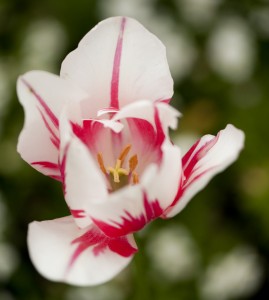 Taking place on Sunday, May 20, The New York Botanical Garden welcomes the Hartford Symphony Orchestra in hosting “Monet’s Friends,” an accompaniment to our exhibition that magnifies the art of the era through the strains of musical Impressionism. Your ticket to the chamber music series will also include access to Monet’s Garden, allowing a full-circle experience of the sights and sounds that France embodied in the late 1800s.
Taking place on Sunday, May 20, The New York Botanical Garden welcomes the Hartford Symphony Orchestra in hosting “Monet’s Friends,” an accompaniment to our exhibition that magnifies the art of the era through the strains of musical Impressionism. Your ticket to the chamber music series will also include access to Monet’s Garden, allowing a full-circle experience of the sights and sounds that France embodied in the late 1800s.
Beyond the masterful paintings that emerged from Claude Monet’s time at Giverny, the threshold of the 20th century brought with it a wealth of musical experimentation in Europe. From this innovative turn came revered French composers: Debussy, Roussel, Fauré. As contemporaries to the great visual Impressionist, their music–like Monet’s art–redefined genre boundaries, dipping into an atmospheric exploration of composition and technique that defied the conventions of the day.
Orchestra Concertmaster Leonid Sigal, one of several virtuosic performers lending their skill to our concert series, takes the time to examine the composers, musicians, and compositions soon to enliven the NYBG’s Ross Hall.

Albert Roussel (1869–1937)
String Trio, op. 58
Roussel’s path toward a career as a composer was a rather unorthodox one. Roussel, who had been orphaned very young, first received piano lessons at the age of eleven. An interest in music soon developed, but upon leaving school he studied at Marine College in Brest and went on to become a naval officer, eventually commanding a torpedo boat in Indochina. His career at sea ended in 1894 when he resigned his commission and he decided to devote himself to music. He studied in Paris, first with Eugene Gigout and then with Vincent d’Indy at the Schola Cantorum; he did so with such success that in 1902 he was invited to teach counterpoint at the Schola (where one of his students was Erik Satie). He was in the anomalous position of being both student and professor. Perhaps unsurprisingly, there is an academic quality to his earlier chamber works, which are full of a long-windedness that was not to remain characteristic of Roussel, whose mature work is more readily characterized as terse.
The String Trio is the last work Roussel completed, barely a month before his death (he had a good deal of ill health in the last 10 years of his life). It isn’t only the advantage of hindsight that persuades one of the presence of a haunted pain in much of this Trio. The allegro seems more like a ghost of previous “Rousselian” allegros, lacking real substance; the long and marvelous central adagio is at times disturbingly poignant and at times marked by a kind of wistful resignation; the closing scherzo teeters on the edge of the grotesque, its elegance distorted into a kind of macabre dance.
Claude Debussy (1862–1918)
Sonata for Violin and Piano in G Minor, L. 140
Toward the end of his life, Debussy embarked upon a project of composing a series of chamber works with the collective title of “Sonates pour Divers Instruments” (“Sonatas for Various Instruments”), which was intended to contain six separate pieces. Offered in homage to Emma-Claude Debussy, his wife, this project occupied him from the summer of 1915 to the spring of 1917. The first work in this collection is the unconventional Sonata for Cello and Piano (1915). Next came the beautiful and unique Sonata for Flute, Viola, and Harp (1915–1916). The Sonata for Violin and Piano (1917) that followed turned out to be Debussy’s last composition.
The opening movement, Allegro vivo, is quite melodic and smooth in character, with numerous held notes and shifting rhythms. Despite the marking, though, it is hardly “fast.” Due to the soft, laid-back nature of the opening movement, the composer did not find it necessary to include a sonata’s usual slow (second, or sometimes third) movement. The second movement is an Intermezzo (“Imaginative and light”). It has a dance-like quality and half-way through, a very chromatic melody. The third movement, Finale, (“Very animated”), gave the composer the most trouble. Initially, the violin reprises the opening theme of the first movement, with similarly familiar accompanying figures. Then, the violin breaks out into a kind of unaccompanied frenzy. The movement contains many striking soft moments, but it also ends quite forcefully and in a major key (G Major, instead of the work’s frequent use of G minor).
The Sonata for Violin and Piano had its premiere performance on May 5, 1917, with the violinist Gaston Poulet and the composer at the piano; this was the last concert in Paris of Debussy’s works during his lifetime. A second performance by Debussy and Poulet took place in September of that same year at Saint-Jean-de-Luz; it was to be the composer’s final public performance as he died in March of the following year.
Gabriel Fauré (1845–1924)
Quartet No. 2 for Piano, Violin, Viola and Cello in G Minor, op. 45
Gabriel Fauré wrote two piano quartets, the first of which (in C Minor, op. 15) is a great favorite in chamber music circles, loved for its warm eloquence. The G Minor piano quartet, op. 45, is less-often performed, but perhaps even more powerful in its effect. Although Fauré is well known, and rightly so, for his supple and atmospheric harmonic language, he was also quite a formal stickler, deeply trained in counterpoint and the techniques of Renaissance music. The Second Piano Quartet, harmonies notwithstanding, derives much of its great strength from the strict, arching span of its melodic lines.
Each movement begins with a setting of undertone from the piano alone. The sweep of the first movement is generated almost instantaneously in a rapid crescendo from piano to forte, which washes the strings’ long melody up to the surface. This roar of notes reappears, sometimes in full and sometimes in shadow, throughout the movement, and finally subsides at its end. A febrile variant of the first movement’s undertone begins the second movement—a sinister scherzo. The third movement, Adagio non troppo, has an undertone as well, but it is, by contrast, one of deep calm. Fauré wrote that he had inadvertently found the sound for the piano in a memory of distant bells: “The slow movement of my second quartet is one of the few places where I realize that, without really meaning to, I recalled a peal of bells we used to hear of an evening, drifting over to Montgauzy from a village called Cadirac whenever the wind blew from the West.”
The last movement takes a much more determined stance, bringing back the arched unisons from the strings, and clearing the fantastic air of the middle two movements.

About the Artists
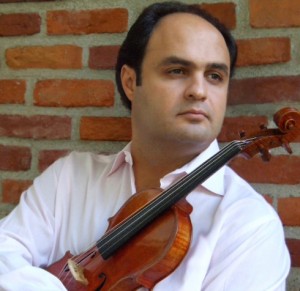 Hartford Symphony Orchestra Concertmaster Leonid Sigal has enjoyed a multifaceted career as recitalist, chamber musician, and orchestra leader. Winner of several violin competitions and recipient of the 1993 Algur H. Meadows Artistic Scholarship Award, he moved to the United States and was offered a prestigious fellowship at the New World Symphony by Michael Tilson Thomas in 1995.
Hartford Symphony Orchestra Concertmaster Leonid Sigal has enjoyed a multifaceted career as recitalist, chamber musician, and orchestra leader. Winner of several violin competitions and recipient of the 1993 Algur H. Meadows Artistic Scholarship Award, he moved to the United States and was offered a prestigious fellowship at the New World Symphony by Michael Tilson Thomas in 1995.
He has performed with Sir Georg Solti, Leonard Bernstein, and Christoph Eshenbach. His festival appearances include France’s Recontres Musicales d’Evian and the Schwetzingen Festivan in Germany, as well as those in Prague, Tokyo, Seoul, and Miami.
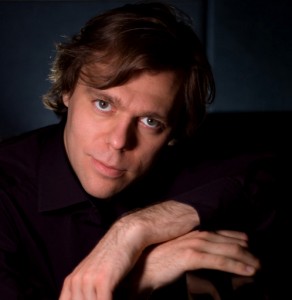 Pianist Andrius Zlabys has appeared throughout the world as soloist and chamber musician. A prizewinner at the 2003 Cleveland International Piano Competition, he has performed with the New York Philharmonic, Boston Symphony, and Cleveland Orchestra. Mr. Zlabys made his Carnegie Hall debut with the New York Youth Symphony Orchestra in 2001.
Pianist Andrius Zlabys has appeared throughout the world as soloist and chamber musician. A prizewinner at the 2003 Cleveland International Piano Competition, he has performed with the New York Philharmonic, Boston Symphony, and Cleveland Orchestra. Mr. Zlabys made his Carnegie Hall debut with the New York Youth Symphony Orchestra in 2001.
He also has performed at such venues as Avery Fisher Hall, Concertgebouw, Carnegie’s Zankel and Weill Recital Halls, Teatro Colon, Wigmore Hall, Musikverein and Suntory Hall.
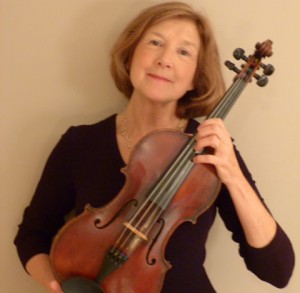 Patricia Daly Vance has performed as a violist with the Hartford Symphony Orchestra for 30 years. She completed her undergraduate degree at the Eastman School of Music, and received her Masters in Viola Performance at the Juilliard School, where she was awarded a full scholarship as a student of Lillian Fuchs. She was a member of the Aspen Festival Orchestra, the Rochester Philharmonic, and the Tanglewood Fellowship Orchestra.
Patricia Daly Vance has performed as a violist with the Hartford Symphony Orchestra for 30 years. She completed her undergraduate degree at the Eastman School of Music, and received her Masters in Viola Performance at the Juilliard School, where she was awarded a full scholarship as a student of Lillian Fuchs. She was a member of the Aspen Festival Orchestra, the Rochester Philharmonic, and the Tanglewood Fellowship Orchestra.
She has performed under the baton of Leonard Bernstein, Aaron Copland, Seiji Ozawa, and Erich Leinsdorf. As a symphony musician, she has performed with many of the world’s finest musicians, including Rudolf Serkin, Rostropovich, Midori, André Watts, and many others.
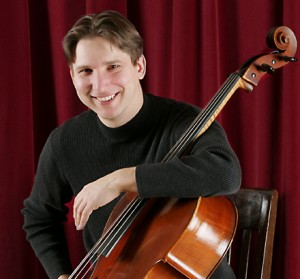 A member of the Hartford Symphony Orchestra since 1998, Peter Zay is also the principal cellist of the Plymouth Philharmonic Orchestra. As a member of the American Sinfonietta he has toured throughout Europe and recorded the complete Beethoven Piano Concertos with Garrick Ohlsson on the Natural Soundfields label.
A member of the Hartford Symphony Orchestra since 1998, Peter Zay is also the principal cellist of the Plymouth Philharmonic Orchestra. As a member of the American Sinfonietta he has toured throughout Europe and recorded the complete Beethoven Piano Concertos with Garrick Ohlsson on the Natural Soundfields label.
He has performed regularly with many other organizations including the Boston Lyric Opera, the Pro Arte Chamber Orchestra of Boston, the Boston Modern Orchestra, the New World Symphony, the New Haven and New Bedford Symphonies, and the Barrington Stage Company.
Reserve your tickets early, as seats are limited. Be sure to join us for encore performances on October 7 and 21!

